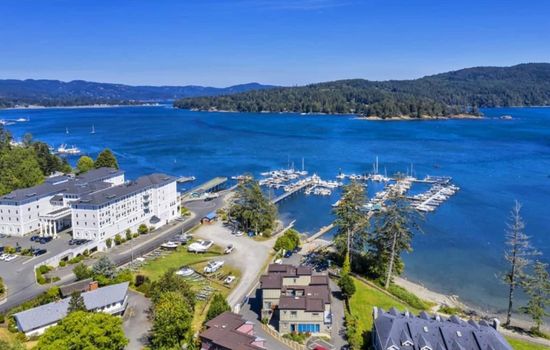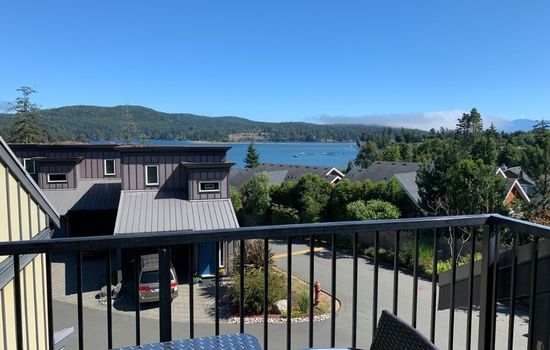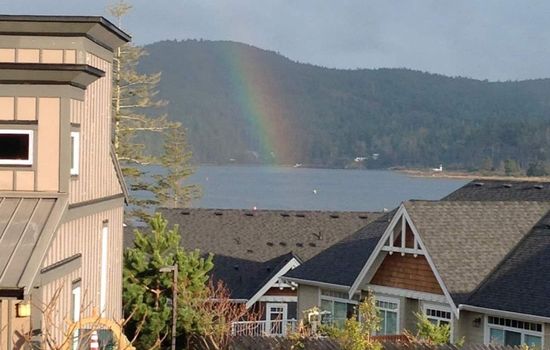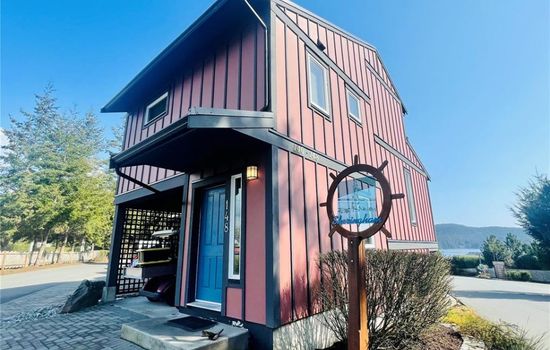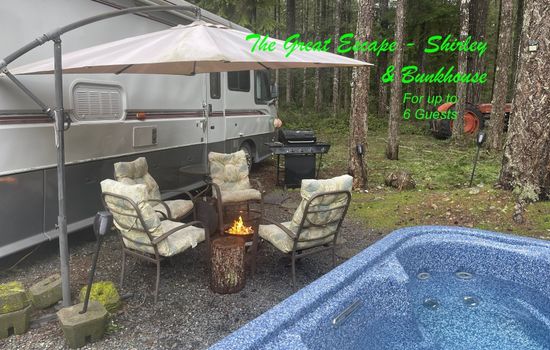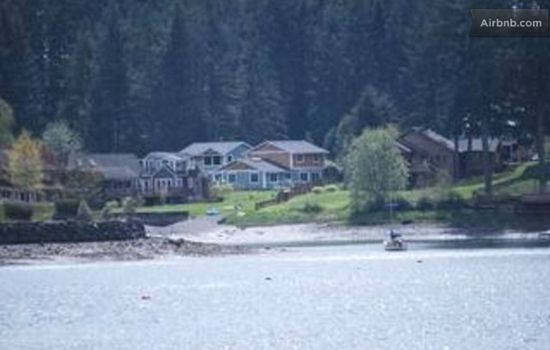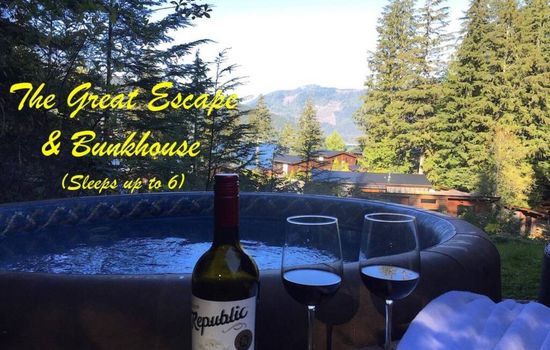Olympic National Park’s main visitor center in Port Angeles is open daily from 8:30 AM to 5 PM, except for Thanksgiving and Christmas. The Hoh Rain Forest Visitor Center is currently closed due to a road washout. Hurricane Ridge Visitors Center is open from 9 AM to dusk. Other centers have varying hours, generally 9 AM to 5 PM. Call 360-565-3130 for specific hours.
The entrance fee at Olympic National Park is $30 for a private vehicle, $25 for a motorcycle, and $15 per person on foot or bicycle, valid for seven consecutive days. Annual passes are $55 for the park, or $80 for an America the Beautiful Interagency Annual Pass.
From Seattle, drive 138 miles via Highway 101 to Port Angeles, then immerse yourself in rugged landscapes and pristine rainforests.
Parking at Olympic National Park is limited, especially at Hurricane Ridge and Hoh Rain Forest. Cars, RVs (up to 15 passengers), and motorcycles can park in designated lots. No overnight parking in day-use areas. Parking fees apply, but no additional fees for RVs or motorcycles.
Accessibility & permits
Emergency
- Cell service availability:Partial
Information not accurate?
Help us improve by making a suggestion.
Olympic National Park, a verdant tapestry on the Pacific Northwest’s Olympic Peninsula, is a paradise for those seeking an immersive natural experience. At its heart lies Lake Crescent, a glacially carved sapphire jewel renowned for its crystalline waters, with visibility extending down to 60 feet and depths reaching 650 feet.
Surrounded by ancient forests and majestic mountain peaks, Lake Crescent is a haven for outdoor enthusiasts. Hike the Marymere Falls Trail or the Mount Storm King Trail to witness the lake’s serene beauty from elevated vantage points. The lake is home to a variety of fish species, including the prized Beardslee trout, making it a fisherman’s delight.
Historic Lake Crescent Lodge and Log Cabin Resort offer luxurious accommodations with a touch of nostalgia, while the north shore is dotted with vacation homes that blend seamlessly into the natural landscape. Nearby, the artisan town of Port Angeles beckons with its quaint shops and local artisans.
Seasonal changes paint the park in different hues; spring brings vibrant wildflowers, summer offers warm days perfect for swimming and kayaking, and autumn is marked by the golden glow of changing leaves. During the summer, ranger-led canoe tours provide an intimate glimpse into the lake’s ecosystem, while summer concerts at Lake Crescent Lodge add a touch of elegance to the evening air.
For those seeking more adventure, local outfitters offer guided hikes and fishing trips. Visit the Sol Duc Hot Springs for a relaxing soak, or explore the nearby temperate rainforest, one of the wettest places in the continental US. Olympic National Park is a symphony of natural beauty, awaiting those who crave a profound connection with the wilderness.
- Area (mi²)
- 1442
- Annual visitors
- 2 900 000
- Established year
- 1897
Top 3 Facts about Olympic National Park
The Sitka Spruce in the Quinault Rainforest, known as the “Quinault Lake Cedar,” measures over 5.8 meters in diameter, making it a remarkable natural wonder.
In this verdant paradise, towering conifers over 20 stories tall stand alongside minute clumps of pink Douglasia clinging to rocky peaks. The landscape is home to over 1,450 types of vascular plants and hundreds of non-vascular mosses. Marine life abounds with whales, dolphins, and sea otters, while golden eagles soar above and rhinoceros auklets inhabit the offshore waters. On land, Olympic marmots and torrent salamanders thrive in unique alpine and wetland habitats, alongside deer, elk, and bears. The rivers teem with healthy runs of Pacific salmon, and over 300 bird species call this diverse ecosystem home.
Towering at 7,965 feet, the glacier-capped summits of the Olympic Mountains rise above subalpine meadows and montane forests. The rugged Pacific coastline stretches over 70 miles, with crystal-clear waters lapping against dramatic sea stacks and teeming tidepools. Here, old-growth forests shelter waterfalls, and snow-capped peaks remain accessible only from select vantage points like Hurricane Ridge.
Family programs
- Junior Ranger
- Ranger-led Tours
- Self-guided Tours
- Workshops & Hands-on Activities
- Family Camping & Overnight
- Volunteer & Stewardship
- Youth Conservation
- Scouting Partnerships
- Virtual Junior Activities
- Arts & Crafts
- Water-based Adventures
Travel Tips
Plan Ahead
Plan a 4-day trip from June to August to avoid rainfall. Rent a car at Seattle-Tacoma International Airport and follow Highway 101. Visit the visitors center, anticipate rocky terrain, and pack meals. Rest often and enjoy the summer solstice.
Pack Appropriately
Pack waterproof hiking boots, layered clothing, and a daypack with a rain cover. Bring a reusable water bottle and a multi-tool. For camping, include a tent, sleep system, and dry bag. Check the season for specific gear needs.
Respect Wildlife
Keep a safe distance from wildlife: 25 yards for most animals, 100 yards for predators. Use binoculars or zoom lenses to observe without disturbing. Respect their space, especially during dawn and dusk when they are most active. Avoid feeding or approaching them. Stay on designated trails and dispose of trash properly.
Stay Informed
Stay on marked trails, avoid ledges and fast water, and check weather conditions. Follow park signs and rules. For emergencies, call 911 or park rangers at 360-565-3130. Stay informed, stay safe.
Seasons
Spring brings mild temperatures (40s-60s°F) and ample rain, making it ideal for lush green landscapes. March to May, experience the Olympic Peninsula’s wildflowers blooming and the annual River and Ocean Festival in April. Be prepared for unpredictable weather and potential trail closures.
Summer brings perfect weather, with temperatures in the 60s-80s°F, to explore lush landscapes, waterfalls, and wildflowers. Hike 611 miles of trails or attend the National Junior Ranger Day in June and July. Ideal for outdoor enthusiasts.
Experience autumn’s magic in the Pacific Northwest, where vibrant maple leaves and moss-draped forests come alive. September brings the haunting calls of Roosevelt elk bugling, while October’s rains unleash a kaleidoscope of mushrooms. Cool temperatures, around 40-60°F, and occasional rain create an intimate, secluded hiking experience. Ideal for nature enthusiasts seeking solitude and unique seasonal events.
Experience winter’s serene beauty from November to April, with temperatures in the 30s and 40s,usatating snow in high elevations and abundant rainfall in lowlands. A unique time for immersive exploration, though some facilities may be closed.
Information not accurate?
Help us improve by making a suggestion.
Where to stay
Frequently Asked Questions
Ready to dive into what Olympic National Park has to offer? Let’s tackle some of the burning questions you might have as you plan your visit!
-
To visit the northern attractions, stay in Port Angeles or Sequim. For exploring the rainforests and coastal beaches, consider Forks, La Push, or Quinault. If your trip is four nights or longer, splitting your time between Port Angeles and Forks or Quinault can reduce travel time.
-
For an easy trail suitable for young hikers, consider the Marymere Falls trail, which is 1.8 miles round trip with only 298 feet of elevation gain. This trail, located near Lake Crescent, takes you through an old-growth forest and features a picturesque waterfall and wooden bridges. It is kid-friendly and partially wheelchair accessible.
-
You can bring your dog to certain areas, such as campgrounds, parking lots, and paved roads. Dogs are not allowed on most trails or wilderness beaches, but they are permitted on a few specific trails like Peabody Creek Trail and Spruce Railroad Trail. Always keep your dog on a leash up to 6 feet long and follow the BARK rules to bag your pet’s poop.
-
You can park an RV, but most campsites cannot accommodate large motorhomes or trailers. Smaller camper vans and Class B RVs might fit, but check the campsite details carefully. Book early, especially for sites with ocean views.
-
Visit Hurricane Ridge for stunning mountain views and hiking trails like the Hurricane Hill Trail, a 3.4-mile round-trip hike through subalpine meadows. Stop by Lake Crescent for a morning paddle or visit Sol Duc Hot Springs for a relaxing soak. End the day with a sunset walk on Ruby Beach, known for its sea stacks and scenic coastline.

